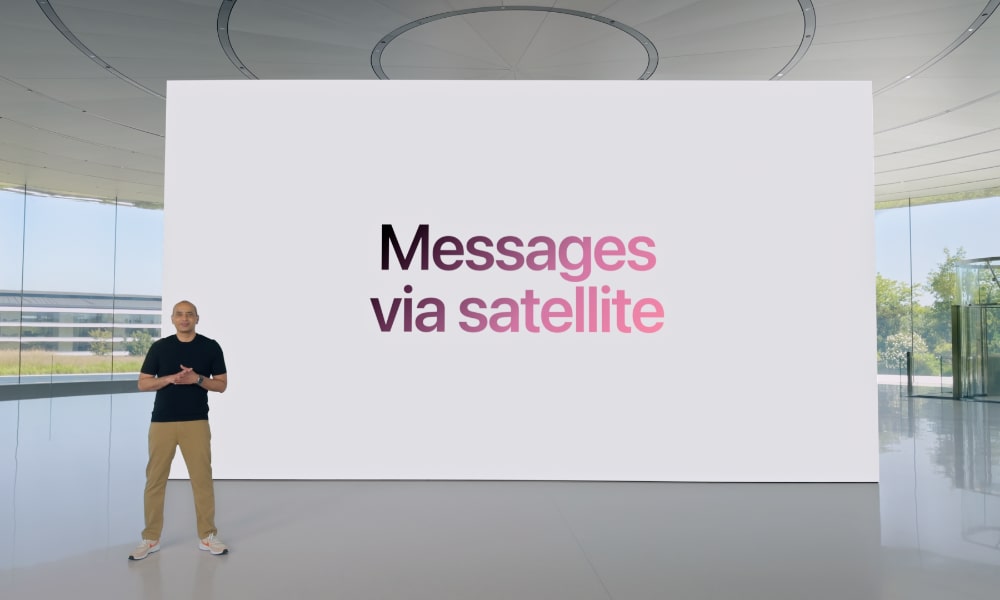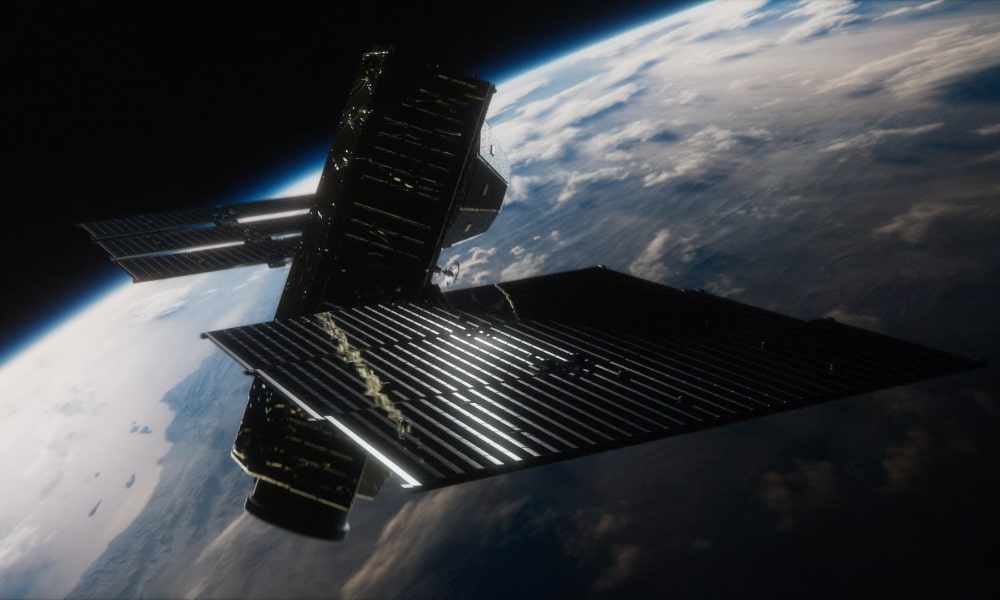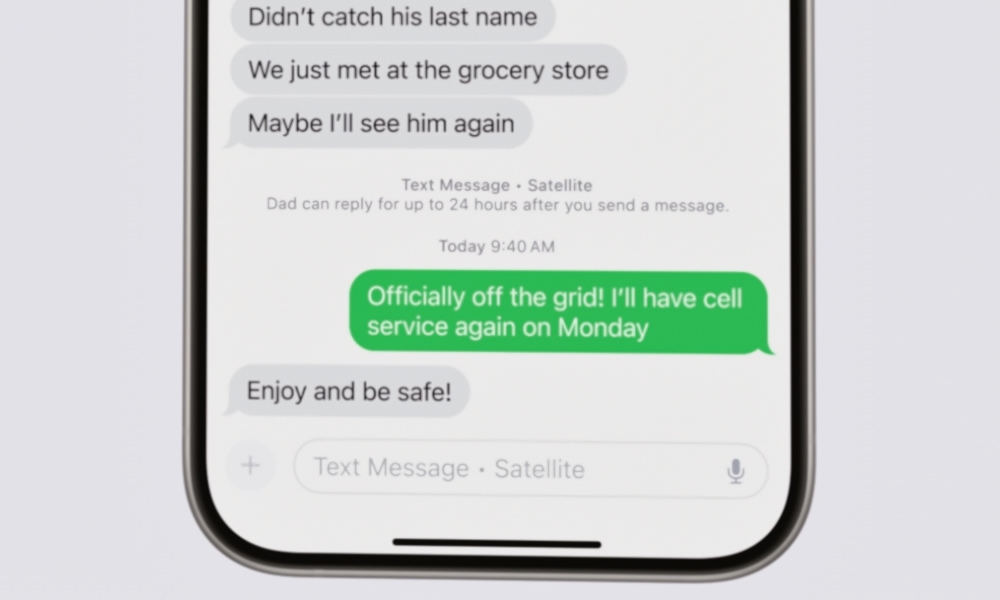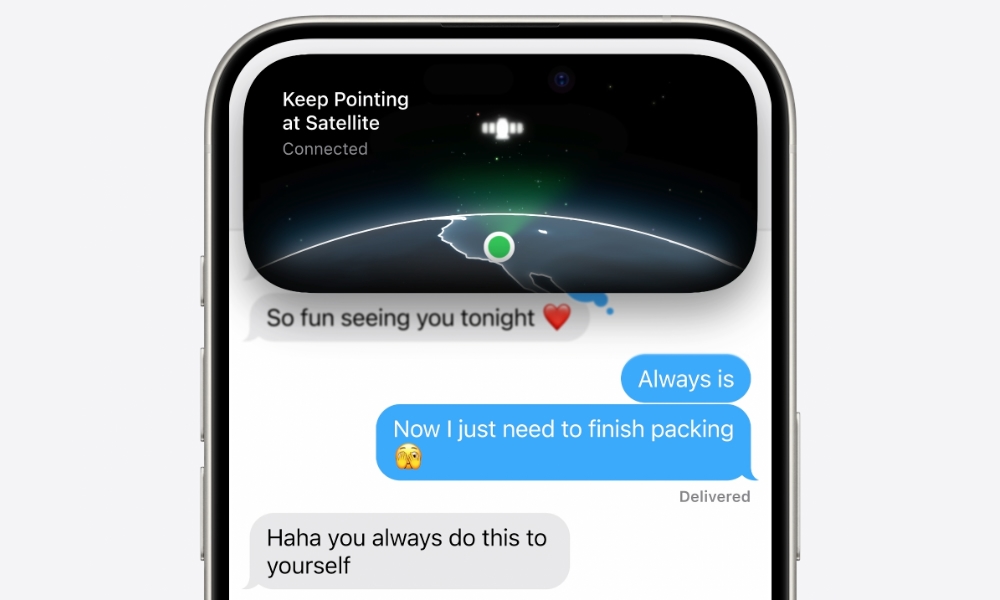iOS 18 Will Let You Send Text Messages via Satellite

Toggle Dark Mode
While the rumor mill spilled most of the beans on what was coming in iOS 18, Apple still tossed us a couple of fun curveballs when it took the virtual stage to show it off during today’s Worldwide Developers Conference (WWDC) Keynote.
One of those surprises is that Apple is expanding its satellite services beyond emergencies and roadside assistance. With iOS 18, you’ll soon be able to send text messages even when you have no cellular or Wi-Fi coverage at all, as long as you can still see the open sky.
It’s the next evolution of Apple’s satellite connectivity, and the best part is that the company plans to offer it at no extra charge — at least insofar as it packages it with Emergency SOS via satellite and Roadside Assistance via satellite.
Messages via Satellite

Of course, the same restrictions apply to Messages via satellite as those other services. Specifically, you’ll need an iPhone 14 or later, as Apple’s earlier models lack the necessary satellite radios. This isn’t 5G over satellite like Elon Musk’s Starlink initiative; instead, the iPhone uses the same L band and S band frequencies as traditional satellite communication services. That ensures better coverage and allows Apple to roll out satellite services globally on its own terms without worrying about tripping over cellular frequencies.
It’s unclear how widely Apple plans to roll out this service at launch; the fine print on the iOS 18 Preview page says it will be coming “along with our existing satellite features in the United States,” which suggests a US-only rollout for now.
Messages via satellite will work natively in the Messages app and support both iMessage and SMS text messages, although there may be some limitations due to the much lower bandwidth of a satellite connection.
Apple says “key features” of iMessage will be supported, like emojis and Tapbacks, but it’s unlikely you’ll be able to send photos, videos, or even audio recordings. Nevertheless, Apple emphasized that everything sent over iMessage via a satellite connection will still be end-to-end encrypted.
Apple presumably uses a gateway for SMS since those messaging services typically require direct connectivity with your cellular carrier. It’s also telling that the example image Apple showed during the WWDC Keynote had a line suggesting the recipient can only reply for 24 hours.
Messages via satellite will work much like Emergency SOS and Roadside Assistance, requiring you to be in an open area where you can see the sky and hold your iPhone up to lock in on a satellite. It’s not something you’ll likely want to use for casual texting, but it’s a great way to check in and stay in touch when you’re out in the great beyond.
Whether these services will eventually have a price tag is anyone’s guess. When Apple first launched Emergency SOS via satellite nearly two years ago, it said at the time that it would provide satellite access free for two years with the purchase of any iPhone 14, an offer that continued with last year’s iPhone 15 lineup.
The limited-time nature of these offers suggested that Apple would eventually start charging even for Emergency SOS services, and many speculated that Apple might offer a paid subscription for less essential services such as messaging.
However, Apple added Roadside Assistance via satellite to the mix last year with iOS 17 and then surprised us when it announced that it was extending the satellite service for another year for iPhone 14 owners, ensuring that everyone will have access to Apple’s satellite services at no charge until late 2025.
Now, the addition of Messages via satellite at no extra cost is an even bigger surprise. That’s a service that other satellite communication providers definitely charge extra for. For example, Garmin charges customers a minimum of $15 per month just to keep one of its dedicated InReach devices connected. That plan only offers ten short text messages, with additional messages charged at $0.50 each.
That’s a pretty sweet deal right now, but it’s important to remember that the clock is still ticking as Apple hasn’t yet said what will happen after the first iPhone models reach the end of their free period later next year. Apple may simply be hedging its bets in case it decides to start charging for the service, but it may also keep extending that deadline indefinitely.









